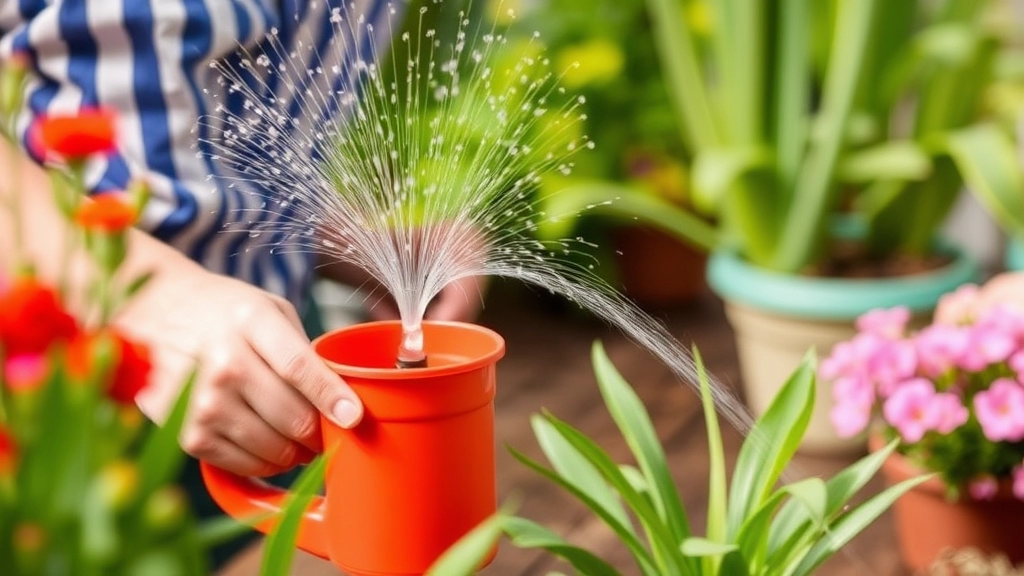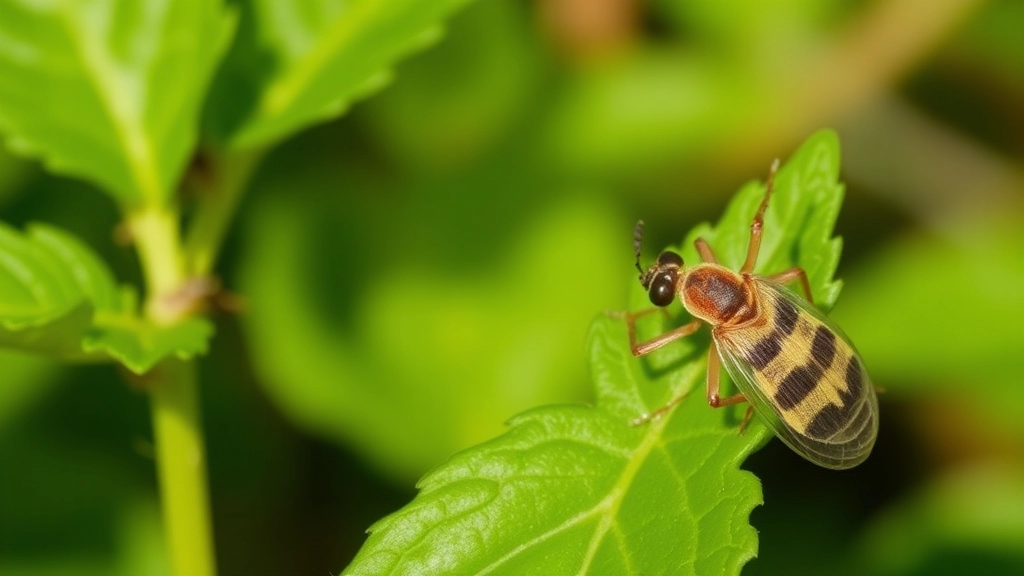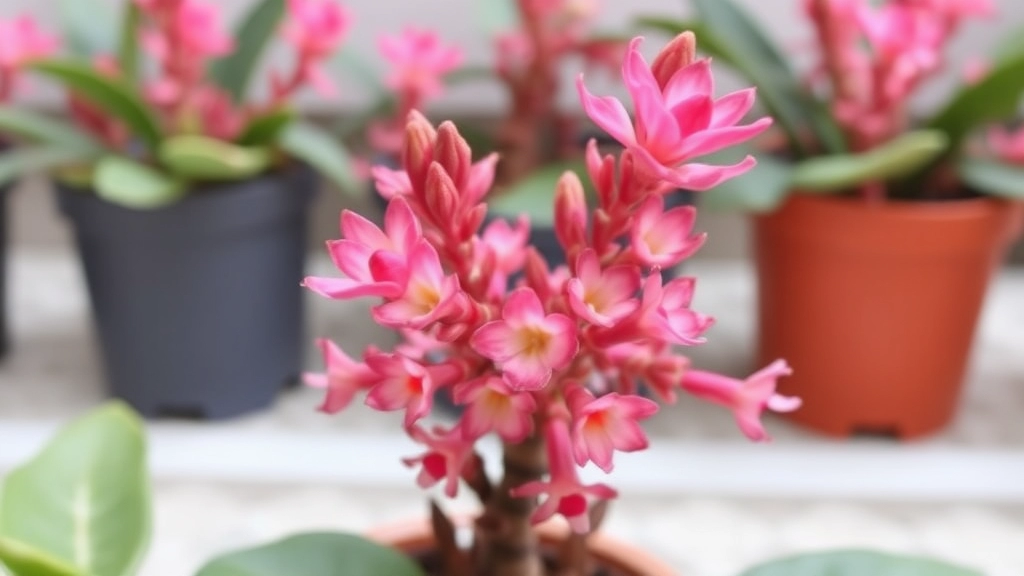Kalanchoe Beharensis Fang Care
Light Conditions
When it comes to Kalanchoe Beharensis Fang care, the right light conditions are crucial. This unique succulent thrives in bright, indirect sunlight. Too much direct sun can scorch its leaves, while too little light can lead to leggy growth. Position your plant near a window where it can get plenty of filtered light throughout the day.
Watering
Watering your Kalanchoe Beharensis ‘Fang’ correctly is key to its health. Overwatering is a common mistake; let the soil dry out completely between waterings. Use a well-draining soil mix to prevent root rot and ensure your pot has drainage holes. This will help maintain the perfect balance of moisture for your plant.
When it comes to nurturing your Kalanchoe Beharensis âFang’, understanding its light requirements is essential. Many plant enthusiasts worry about providing the right amount of light, fearing their plant will either scorch or languish in the shadows.
### Optimal Light Exposure:
– **Bright, Indirect Light:** The âFang’ thrives in bright, indirect sunlight. A south or east-facing window is ideal.
– **Avoid Direct Sunlight:** Too much direct sun can scorch the leaves, leading to brown spots.
– **Supplement with Grow Lights:** If natural light is limited, consider using grow lights to mimic the required conditions.
### Seasonal Adjustments:
– **Summer:** During the summer months, your âFang’ may appreciate a bit of shade during the hottest part of the day.
– **Winter:** In winter, it may need more light, so repositioning it closer to a window can help.
### Signs of Light Stress:
– **Leggy Growth:** If your plant is stretching towards the light, it’s a sign it needs more exposure.
– **Leaf Discoloration:** Yellowing leaves can indicate too much direct sun or insufficient light.
For more detailed care tips, you might find the [care and propagation of Kalanchoe Beharensis tree](https://planthq.org/care-and-propagation-of-kalanchoe-beharensis-tree/) guide useful. Additionally, if you’re interested in exploring other Kalanchoe varieties, check out the [succulent Kalanchoe Tomentosa care tips and growing guide](https://planthq.org/succulent-kalanchoe-tomentosa-care-tips-and-growing-guide/).
Watering Schedule: How to Avoid Overwatering

Are you worried about drowning your Kalanchoe Beharensis ‘Fang’? You’re not alone! Overwatering is one of the most common pitfalls for plant lovers, especially when it comes to succulents like ‘Fang’.
Understanding Your Plant’s Needs
Kalanchoe ‘Fang’ thrives in dry conditions, so getting your watering schedule right is crucial. Here’s how to keep your plant happy and healthy:
- Check the Soil: Always feel the top inch of the soil. If it’s dry, it’s time to water. If it’s still moist, wait a few more days.
- Watering Frequency: During the growing season (spring and summer), aim to water every 2-3 weeks. In the cooler months, reduce this to once a month or even less.
- Use the Right Method: Water deeply but infrequently. Pour water until it drains from the bottom of the pot, then let it dry out completely before the next watering session.
- Pot Drainage: Make sure your pot has drainage holes. This is essential to prevent water from sitting at the bottom, which can lead to root rot.
Signs of Overwatering
Keep an eye out for these signs that you might be giving your ‘Fang’ too much love:
- Yellowing Leaves: If the leaves start to turn yellow, it’s a cry for help.
- Soft, Mushy Texture: Healthy leaves should feel firm. If they’re squishy, it’s time to reassess your watering.
- Foul Odour: A rotten smell coming from the pot is a definite red flag.
Tips for Success
- Adjust for Seasons: Remember, your plant’s needs change with the seasons. In winter, they’ll need much less water.
- Humidity Considerations: If your home is humid, you might need to water even less often.
- Use a Moisture Meter: If you’re unsure, a moisture meter can be a handy tool to help you gauge when to water.
Ideal Soil and Potting Tips for Healthy Growth
When nurturing your Kalanchoe Beharensis âFang’, the right soil and potting techniques are essential for promoting robust growth. You might be wondering what type of soil will best support your plant’s needs.
Soil Composition
- Well-Draining Soil: Opt for a cactus or succulent mix that allows excess water to escape easily. For more details, check out the best soil for Kalanchoe Blossfeldiana care tips.
- Additives: Consider adding perlite or coarse sand to improve drainage further. This helps prevent root rot, a common issue with overwatered plants.
Pot Selection
- Material: Terracotta pots are ideal as they are porous and help wick away moisture.
- Size: Choose a pot that is slightly larger than the root ball. This gives your plant room to grow without becoming waterlogged. For more insights on potting and care, visit our complete guide on how to care for Kalanchoe Tomentosa.
Potting Tips
- Repotting Frequency: Aim to repot every 2-3 years or when you notice roots growing out of the drainage holes.
- Timing: Spring is the best time to repot, coinciding with the plant’s active growing season.
- Layering: Place a layer of gravel or small stones at the bottom of the pot for added drainage.
Common Pests and How to Manage Them

As we dive deeper into caring for your Kalanchoe Beharensis ‘Fang’, it’s essential to address the potential threats from pests that can hinder its growth.
Identifying Common Pests
Kalanchoe ‘Fang’ can fall victim to several common pests, including:
- Mealybugs: These small, white, cotton-like pests often cluster in leaf joints.
- Aphids: Tiny, green or black insects that suck sap from the plant.
- Spider Mites: Minuscule pests that leave fine webbing and cause leaf discoloration.
- Scale Insects: Hard, shell-like pests that attach themselves to stems and leaves.
Signs of Infestation
Recognising the signs early can save your plant from severe damage. Look out for:
- Yellowing or curling leaves
- Sticky residue (honeydew) on leaves
- Visible pests on the plant
- Fine webs on the foliage
Management Strategies
If you notice any of these pests, don’t fret. Here are simple, effective strategies to manage them:
- Manual Removal: For small infestations, gently wipe the leaves with a damp cloth or use a cotton swab dipped in rubbing alcohol.
- Insecticidal Soap: Spray a solution of insecticidal soap on the affected areas, ensuring to cover the undersides of leaves.
- Neem Oil: This natural pesticide disrupts the life cycle of pests. Apply it every few weeks as a preventative measure.
- Isolation: If you discover pests, isolate the affected plant to prevent spreading to others.
Prevention Tips
To keep your Kalanchoe ‘Fang’ healthy and pest-free, consider these preventive measures:
- Proper Air Circulation: Ensure your plant has enough space and airflow around it.
- Regular Inspections: Check your plant weekly for any signs of pests.
- Healthy Plant Care: A well-cared-for plant is less likely to attract pests. Follow proper watering and light guidelines.
Simple Steps to Propagate Your âFang’ Plant
As we delve into the propagation of Kalanchoe Beharensis âFang’, it’s essential to understand that this process can be both rewarding and straightforward. Many plant enthusiasts often worry about the best methods to ensure successful propagation.
Why Propagate Your âFang’?
Propagation allows you to expand your collection, share with friends, or simply enjoy the process of nurturing new plants.
FAQs on Kalanchoe Beharensis Fang Care
How often should I water my Kalanchoe Beharensis ‘Fang’?
During the growing season (spring and summer), water your plant every 2-3 weeks. In cooler months, reduce watering to once a month or even less. Always check the top inch of soil to ensure it’s dry before watering.
What are the signs of overwatering in Kalanchoe Beharensis ‘Fang’?
Signs of overwatering include yellowing leaves, a soft and mushy texture, and a foul odor coming from the pot. If you notice any of these symptoms, reassess your watering schedule.
How can I prevent overwatering my Kalanchoe Beharensis ‘Fang’?
To avoid overwatering, ensure your pot has drainage holes, water deeply but infrequently, and let the soil dry out completely between watering sessions. Using a moisture meter can also help you gauge when to water.
What pests commonly affect Kalanchoe Beharensis ‘Fang’?
Common pests include mealybugs, aphids, spider mites, and scale insects. These pests can cause yellowing or curling leaves, sticky residue on leaves, and visible fine webs.
How can I manage pest infestations on my Kalanchoe Beharensis ‘Fang’?
For small infestations, you can manually remove pests with a damp cloth or cotton swab dipped in rubbing alcohol. Insecticidal soap and neem oil are effective for larger infestations. Isolate the affected plant to prevent spreading to others.
What preventive measures can I take to keep my Kalanchoe Beharensis ‘Fang’ pest-free?
Ensure proper air circulation around your plant, conduct regular inspections for any signs of pests, and maintain healthy plant care by following proper watering and light guidelines. A well-cared-for plant is less likely to attract pests.
How does seasonality affect the care of Kalanchoe Beharensis ‘Fang’?
Your plant’s needs change with the seasons. In winter, it requires much less water compared to spring and summer. Adjust your watering schedule accordingly to keep your plant healthy.
Can humidity levels affect my Kalanchoe Beharensis ‘Fang’?
Yes, if your home is humid, you might need to water your plant even less often. High humidity can reduce the evaporation rate, leading to a higher risk of overwatering.
Is it necessary to use a moisture meter for Kalanchoe Beharensis ‘Fang’?
While not necessary, a moisture meter can be a handy tool to help you accurately gauge when your plant needs water, especially if you’re unsure about the soil’s moisture level.
References
-
Kalanchoe Beharensis Growing Guide
-
Caring for Kalanchoe Plants
-
Kalanchoe: How to Grow and Care for Kalanchoe Plants
